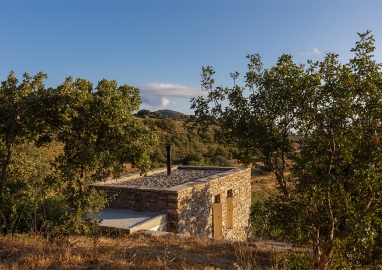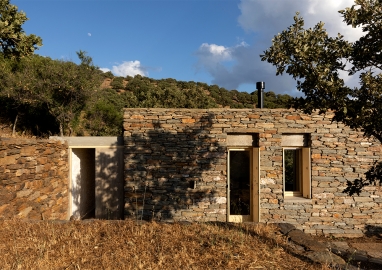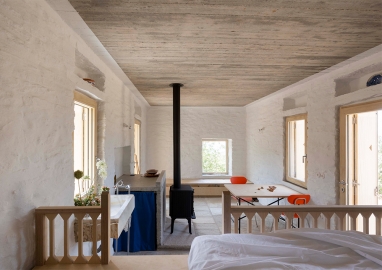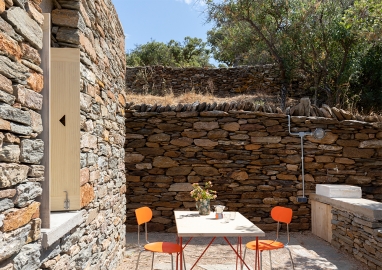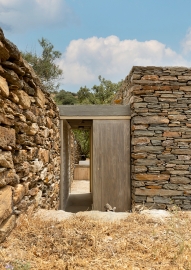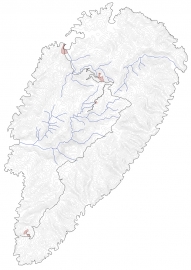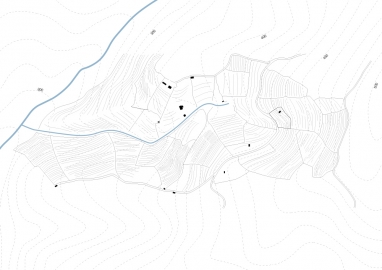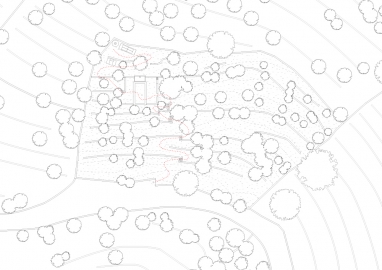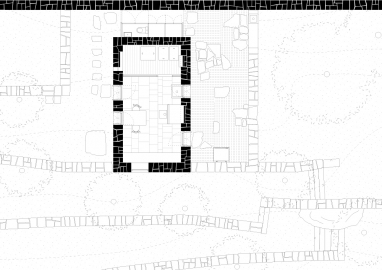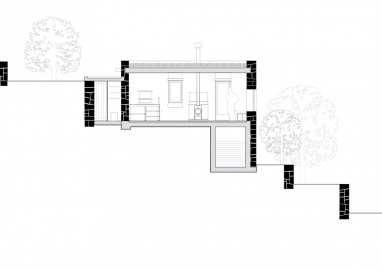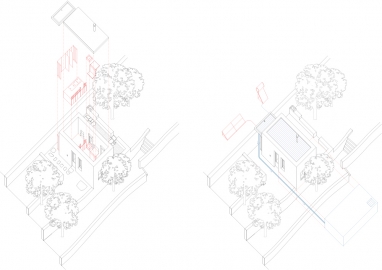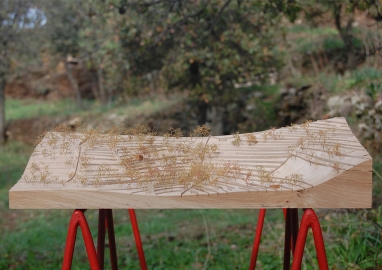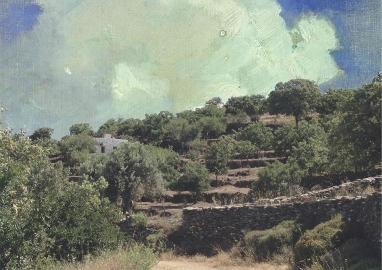Vacation garden with a room
In a peripheral area that retains its character of agricultural production, which is slowly being abandoned, an old orchard is adapted into a vacation garden. An act of maintenance with minimal interventions where the garden is defined as an open-air house and a single room shelters the needs for a simple living in the countryside.
Situated in one of the central valleys of the island, in an agricultural landscape in mutation, the project proposes a garden as a large outdoor living space in the transitional area between an abandoned orchard and the edge of an oak forest. Its spaces, where the new program is articulated loosely, are the result of the meshing of two grids. The linear grid of the old dry-stone terraces, which organises outdoor living spaces and runs almost parallel to the slope and a vegetal grid that descends over the valley mixing itself with the orchard - offering shade and fruit.
New elements are added with care, seeking a certain continuity with the existing context and its character, providing the basic amenities for a frugal living during vacations, articulated mostly around a small room with distinct boundaries able to cover all the needs for enclosed space.
The garden is organised with the definition of small rest areas, clearings, steps, passages and some new endemic fruit trees that find their place during the construction. Some dry-stone terraces are simply repaired and others are completely redefined using the materials already scattered about, continuing a centuries-old practice of maintaining the landscape. A new path traverses the garden following existing traces giving mostly directions, with the use of punctual elements, instead of laying a continuous surface.
The room keeps the imprint of a pre-existing stable and its relationship with the landscape. It is organised around the basic needs for a simple living in the countryside for a family during its holidays with the use of specific architectural devices: A raised bed-storage, a marble sink-window, a hearth-kitchen counter and an extendible bathroom. Its expression follows the local architectural language as a basis, enriching it with contemporary elements and its volume acts as a pause in the continuity of the terraces, defining two outdoor spaces with different relationships to the landscape.
The final result is a product of on-site collaborative conception of the architects with the local craftsmen. The construction’s sustainability and the final autonomy were a key criterion at all levels of the project’s development. On this basis, local material, mostly stone from a nearby quarry, construction practices and the utilisation of spolia were used in combination with a range of contemporary energy solutions. The remnants of one construction phase are incorporated and become design solutions for the next. Common solutions that characterise the local construction culture become carriers of assimilation of materials, ideas and solutions that come from further afield.
To ensure consistency, a charter was developed during the whole process of construction, defining the basic ethical framework for the various choices during the works. It consisted of a series of simple design rules allowing for details to develop on site, as a result of the joint intelligence of architect and craftsman, establishing the character of the project and the role of the architect-builder during the on-site development of the project.

